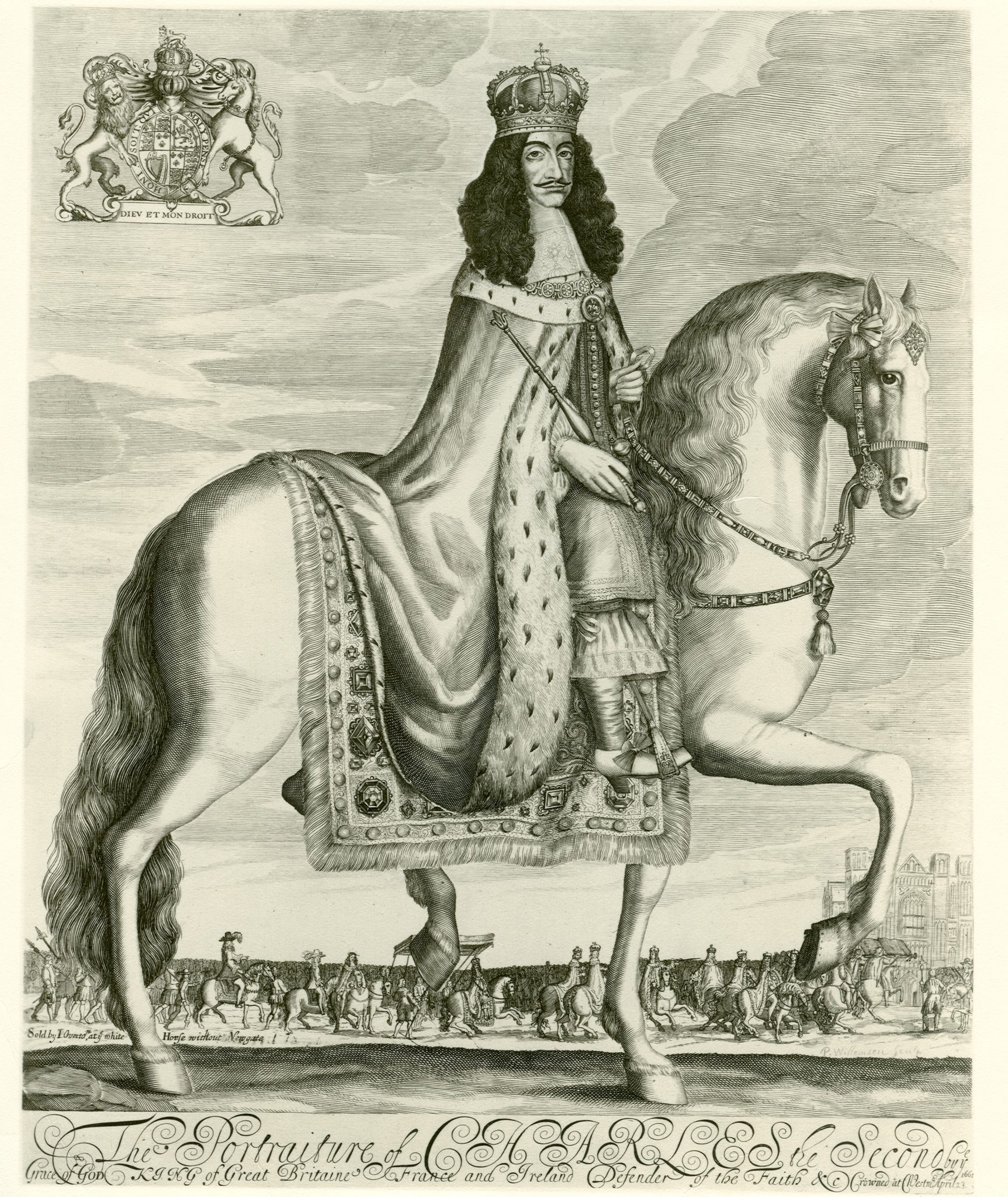
King Charles II, courtesy of the South Carolina Historical Society.
King Charles II was known as the Merry Monarch. After years of exile during Oliver Cromwell’s Puritan Commonwealth, Charles was restored to the throne in 1660. He looked for ways to reward the men who supported his restoration and a grant of land in North America seemed appropriate. The charter that made these men, and their heirs and assigns, the “true and absolute Lords Proprietors” of Carolina was signed on March 24, 1663. The eight lords that were listed were: Edward Hyde, 1st Earl of Clarendon; George Monck, 1st Duke of Albemarle; William Craven, 1st Earl of Craven; John Berkeley, 1st Baron Berkeley of Stratton; Anthony Ashley Cooper, 1st Earl of Shaftesbury; Sir George Carteret; Sir William Berkeley; and Sir John Colleton.
In the hopes of creating a strong, permanent settlement, the king gave the eight men broad powers that were close to those he enjoyed as monarch. They could establish civil structures, collect taxes and duties, maintain order, and they held game and mineral rights. The Charter also guaranteed some religious and political freedom to those who settled the province, which stretched from the Atlantic to the Pacific Ocean and roughly covered the area from the southern border of Virginia to Florida.
The government of Carolina consisted of a governor; a council, of which half were appointed by the Lords Proprietors; and an elected assembly. Settlers of the colony had the right to import and export goods, personal and property rights, and the right to be tried in the colony for crimes committed there. In 1665, the original charter was replaced by another that extended the northern boundary to include the Albemarle region, which was growing in population and prosperity. None of the original proprietors ever set foot in the colony.